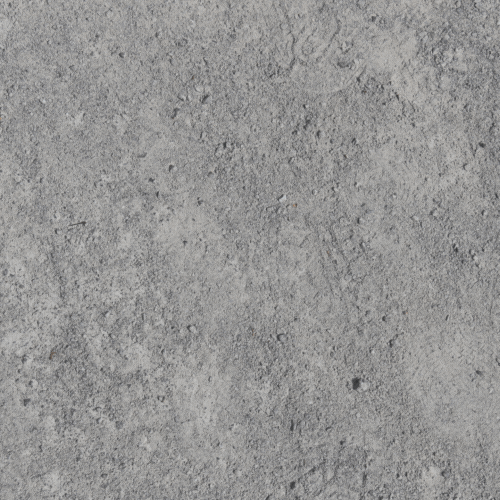In this article, we’re going to explore the history of the Romanian AKM and how it led to the development of the WASR-10 (and finally the WASR-10 v2), which was designed exclusively for the civilian market.
The controversies, importation hurdles, and lawsuits that have erupted since its introduction are dumbfounding, to say the least!
The major players on the importation side of the Romanian AKM (namely CIA and KUSA) are explored and their often caustic and fragile relationships reveal an interesting dynamic that, for better or worse, seemed veritably intertwined with both foreign and domestic interests to the benefit of some but resulting in the downfall of others.


To those wondering, the WASR-10 (Wassenaar Arrangement Semi-automatic Rifles) was the name given to the post-ban version of the Romanian-made AKM rifle.
But, before we get into the birth of the WASR-10, let’s start with the adoption of the Russian AKM-pattern rifle by Romania which was later adapted to a style of its own making.


The First AK Made in Cugir, Romania
In 1974, Romania was the third country in the world to develop a domestically-made AK. It was called the Pistol Mitralieră model 1963/1965 (Romanian for “machine pistol”) or PM md. 63. This was a semi-automatic rifle designed for security and military service personnel with folding metal stock, slanted muzzle brake, and inward bent bolt handle.
It was chambered in the 7.62x39mm cartridge, had a side rail for mounting a scope, and was fed from 30 round curved box magazines (a copy of Russian design).
A variant was later developed that accepted standard AK magazines (of higher capacity) but this was not accepted into full production because of feeding issues caused by the curvature of the magazine.
The Romanian state arms factory was named “Fabrica de Arme Cugir” and was located in the town of Cugir, Romania (roughly 100km NNE of Alba Iulia) and was established as a self-supporting entity in 1859 to service the needs of all branches of the Romanian military throughout the XIX century and was one of the first industrial plants on modern European territory at that time.
After WW2, it was repurposed by the communist government as a manufacturing site for weapons and munitions and was therefore renamed this time as “Intreprinderea 41 Mecanica Cugir” (“41st Mechanic Plant”) which kept its old acronym ICMUC. In 1991, after the fall of the communist regime in Romania, was renamed again as “Fabrica De Arme Cugir” (“Arms Manufacture Cugir”).
This was a Soviet-style weapons manufacturing facility with a strict quality control policy and was well equipped to accomplish just about any task set before them by the Romanian government or military force at that time.
The headquarters was located in Bucharest city while the factory was located deep in Transylvania which was much more protected from possible invaders at that time.
In fact, this was one of the main reasons why it was chosen for the development and production of AK-style rifles in 1974 since it was very difficult (if not impossible) to reach for anyone who wanted to sabotage the factory.
This was also an opportunity for the Romanian government to prove that they were capable of supplying their own needs so they took on this challenge which was advantageous for them since it was a very profitable business for any country at that time.
Romania’s First Production AKM Model: PM md.65
The first production model was the PM md. 65 (Pistol Mitralieră model 1965) which was developed in 7.62x25mm Tokarev caliber due to political reasons (the former Soviet Union was the primary arms supplier of Romania at that time).
A prototype was developed but never entered production (which may be found today in rare specimens only) because Cugir decided to develop another prototype based on the Soviet 7.62x39mm cartridge instead, once again due to political reasons.
This was designated as PM md. 1974 model and was also a semi-automatic rifle that was exported successfully in the early 1980s when Ceaușescu was still in power in Romania despite being under an arms embargo from most of the Western world at that time.
After Ceaușescu was overthrown in 1989, the new government imposed a new rule on all commercial activities that were based on the “use it or lose it” principle so IAR CUGIR had to find a buyer for its products since they were not allowed to stockpile weapons anymore.
The Century International Arms Contract
In 1991, they finally found one when they struck a deal with Century International Arms (CIA) who owned the import/export license at the time for Romanian small arms. The latter was the sole distributor for all IAR CUGIR weapons in North America until 2005 when they lost their license because of some bureaucratic reasons.
After that, Century was only able to distribute spare parts and accessories while IAR was free to sign open contracts with other dealers (including Kalashnikov USA).
NOTE: This information was also confirmed by Mr. Adrian Karatnits who was the Marketing & Sales Manager at CIA Romania (from 1991 until 2005) during 2008-2010 when he was interviewed over the phone by Bogdan Plaiasu (while working on his books), therefore is not an assumption but rather a fact taken from documented reports.
After signing the “contract” with Century International Arms, IAR was allowed to sell its products under the name of CAR-15 (Century Arms model Romanian 15) which was an exclusive designation for all IAR CUGIR products.
They are not to be confused with Colt Model 653 carbines, also known as CAR-15s which were manufactured by Colt Industries in 1969 and were only used by the US Army Special Forces before being replaced by M16A1 rifles during the early 1970s.
A Rocky Relationship Ensues & KUSA Gets a Piece of the Pie
After 2001, Century was forced once again to split the distribution of IAR CUGIR weapons between their own products and those imported from Romania after they lost their exclusive rights to distribute IAR CUGIR products anymore.
Since then, Kalashnikov USA became another official distributor for IAC but was required to build its own parts based on IAR CUGIR designs since they were not allowed to import any whole weapons from Romania, only the parts that were agreed upon in the signed “contract”.
Trademark Infringements & Lawsuits
Indeed, Kalashnikov USA was originally known as “K-Vest” when it was established but was forced to change its name once again in 2001 due to lawsuit threats by Kalashnikov Concern under an allegation of trademark infringement.
The lawsuit was actually inspired by Century International Arms themselves in order for them to gain more power over their largest competitor which was coincidentally importing mostly AK-type rifles at the time (in 1998) even though both companies were owned by a few friends and had an agreement made before either side knew of such a lawsuit.
This was said by Mr. Glenn Gardner who was the CEO of K-Vest from 1997 until 2001 during an interview conducted by C.E. Whitten (a former CIA employee) for his piece on several lawsuits made against Century International Arms in 2012 and was also confirmed by a person who was involved at both companies who was able to provide proof of such evidence as well as having its own personal experience after the whole ordeal was over.
IAR CUGIR Bought Out By ROMARM
According to a reliable source, IAR CUGIR was finally allowed to set up its own production line for export purposes in 2007 but was unable to do so because of financial problems which forced them to sell some of its property before it could happen. In 2010, the company was bought out by another Romanian weapons manufacturer known as ROMARM which was also located in Cugir.
The Fracturing of One Company Into Two
In 1998, Century was forced to split its company in order to keep a good relationship with IAR CUGIR. Mr. Glen Gardner was instructed by the Romanian Government that he was allowed to distribute only spare parts and accessories for IAR rifles while another new company was allowed to purchase and import whole weapons from Romania without any license (since CIA was already established with such licenses).
That is when K-Vest (which was originally known as KSI until 1999) was created and was run by several former Century employees who were also friends of the owner.
The WASR-10’s Rocky Release
Mr. Glenn Gardner designed most AK-type pistols at this time while Jerry Prasser (who was the head manager for KSI/K-V at the time) made some parts and was responsible for the overall assembly. That is because Century was not allowed to import any whole weapons from Romania since it was in violation of its “contract”.
However, Jerry Prasser was able to do it because he was a former employee at SI Defense which was another company that was also located in Cugir but was owned by an American businessman named Mike Miller who had no contract with IAR CUGIR as far as this research could conclude.
It should be noted, however, that as soon as Mr. Glenn Gardner left both companies (after his designs were copied and illegally sold) Mr. Michael Miller was also forced to leave Romania and was banned from returning until late 2002… In 2001, after K-Vest was established and was almost ready to begin production of its first AK-type pistol, Century Arms was sued by Kalashnikov Concern for “copyright infringement”…
The creator of the WASR-10 was in fact Mr. Jerry Prasser, who was also an employee at both companies…
Birth of the WASR-10 v2
The WASR-10 v2 was designed by IAR CUGIR mostly for its own needs but was never produced in any numbers because the company was not granted enough time to do so, being forced to sell off some parts in order to grant their survival.
After being bought out by another Romanian weapons manufacturer named ROMARM, the latter was able to produce it once again under license from ZM Weapons (Zakłady Mechaniczne “Łucznik” Spółka Akcyjna) at their Radom plant in Poland where it was given a new name known as the WASR-10 v2.
It was then exported under that name from Romania to the US where it was distributed by CII Firearms International Corp (which was a subsidiary company formed in 2003 for Century International Arms specifically for this purpose while having the IZHMASH factory in Russia continue its production line for other clients that were not affected by sanctions or import bans from their foreign trade partners at the time).
At its launch, the WASR-10 v2 was offered in four different variants: WASR-10 Axd (fixed stock), WASR-10 Axs (side folding stock), WASR-10 x39mm, and WASR-10 Kalashnikov.
Final Thoughts
It would appear as though the development of the military AKM in Romania, which eventually led to the civilian WASR-10 variant, was no small feat. The manufacture of these AKs in Romania switched hands a number of times and the importation by Century Arms is what eventually led to the WASR-10 landing on our shores and into our hands.
It was not without its infighting, lawsuits, breakups, and contract breaches, but it was ultimately successful in making the WASR-10 a household name to AK enthusiasts everywhere.
Perhaps now, you can see just how difficult it is to get an AK from military production to commercially viable, especially when combating draconian import laws that force manufacturers to strictly adhere to a prescribed list of boxes that must be checked when going through customs.
This, in turn, makes it more difficult for US importers as they must cut through miles of bureaucratic red tape before receiving these unfinished and often “sporterized” AKs. After the WASR-10s arrive stateside, the importer must perform the final machining of the firearms before they can sell them to the consumer- this usually involves widening the magazine well to accept double-stack magazines. *Imported AKs must have 10 US-made parts to make it 922r compliant.




I’d have to give blessing with you here. Which is not something I usually do! I enjoy reading a post that will make people think. Also, thanks for allowing me to speak my mind!